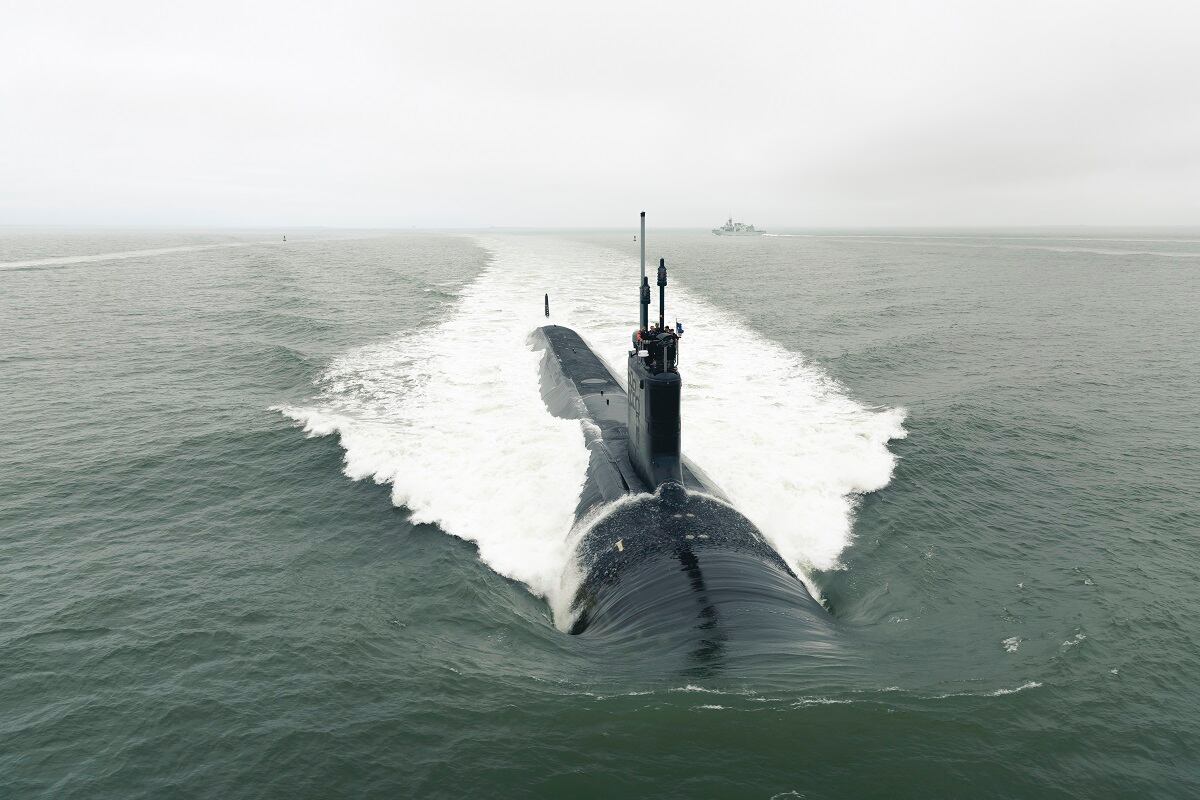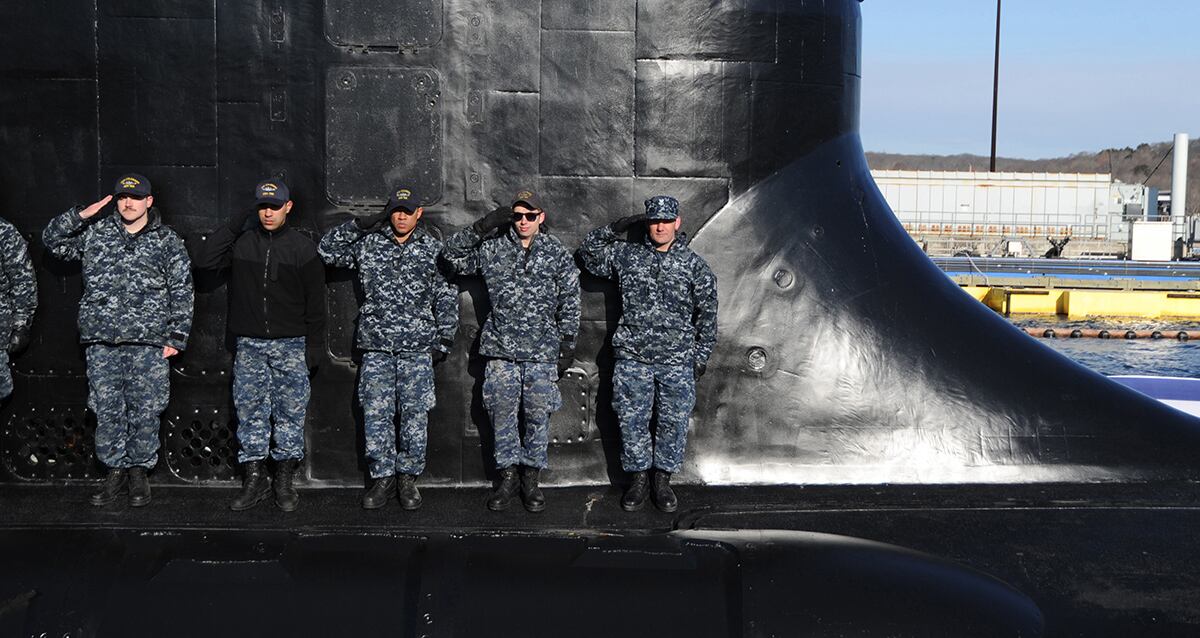WASHINGTON — The U.S. Navy is dealing with persistent delays throughout its submarine-building enterprise as it prepares to enter into a historically large contract for the complicated Block V Virginia-class attack submarine and begin heavy work on the Columbia-class ballistic missile submarines.
The Virginia-class boats across the board are facing delivery delays of between four and seven months, according to Navy budget materials submitted to Congress. The setbacks are part of a systemwide issue, with the Navy ramping up demand on the supplier base in the wake of pressure on shipbuilding budgets and a shrinking fleet.
But it’s a problem the Navy will have to address as it prepares to buy the 10-ship Block V Virginia-class boats, nine of which will have the 84-foot Virginia Payload Module designed to triple the Tomahawk capacity of the Virginia class. The previous block buy in 2014 was $17.6 billion, and the new contract could be closer to $20 billion with the addition of the VPM.
The Navy also faces an imperative to begin to field its new ballistic missile submarines in the late 2020s, which is part of the national strategic deterrent strategy, an effort that will draw from the same stressed supplier base as the Virginia class.
RELATED

In a statement, Naval Sea Systems Command acknowledged the delays but cautioned that the program was already on an accelerated path.
“PEO Submarines and the program office have communicated schedule delays to the Assistant Secretary of the Navy for Research, Development and Acquisition — the milestone decision authority for the program,” according to a statement from NAVSEA.
“As the Navy and the shipbuilders continue to address construction performance and utilize opportunities for improvement, up to seven months late is the current estimate — note that this is against an accelerated schedule verse prior block deliveries.”
NAVSEA said the hiccups in the supply system were creating schedule delays because the yards lose time waiting for parts.
“Delays are not associated with key material, but rather the cumulative effect of the two-per-year construction rate impact on the submarine industrial base,” the statement reads. “There are some instances of late material that have an indirect impact on construction, most often causing less-efficient work sequencing, leading to overall ship schedule delays.
“The Navy and shipbuilders are actively working to mitigate these material delays with the vendor base and within the shipyards.”
The cumulative affect is that planned accelerations to the construction schedule will likely not pan out, the statement continues.
“The contract build span for SSNs 792-794 is 62 months and reduces down to 60 months for SSNs 795-801,” NAVSEA said. “The delivery of SSNs 792-798 are estimated to be four to seven months late to contract. These ships will deliver to more-executable construction spans similar to the Block III ship delivery of 66 months.”
The Navy’s top acquisition official said in an email that the stress on the system is a challenge, but one the Navy is working to manage.
“We see continuing stresses on labor, materials, suppliers and shipyard infrastructure as we continue to try to maintain and reduce [construction times],” said James Geurts, the Navy’s head of research, development and acquisition. “Although challenging, we will work through them as we drive the construction span goals below 66 months while adding Virginia payload modules, sustaining the fleet and ramping up the Columbia program.
The Navy on Monday issued $2 billion in contracts for long-lead time material for the Virginia Block V buy, a story first reported by USNI News.
Supplier base blues
The delays in the Virginia schedule are a problem for the Navy as it works toward its No. 1 shipbuilding priority: the Columbia program. The Navy has said alternately that it has no margin for error in the program and that it has built in a sufficient margin to work around delays, but the service has also made clear from the beginning that the Ohio-class ballistic missile submarines are almost spent.
The first Ohio-class boomer will need to decommission in 2027, which puts the pressure on the Navy to deliver the Columbia on time in 2027.
But the state of the submarine industrial base is cause for concern, said Bryan Clark, a retired submariner and analyst with the Center for Strategic and Budgetary Assessments.
“It does not bode well if they are already seeing delays in the Virginia program with building two per year,” Clark said. “Within the supplier base there are a lot of sole-source and single-source suppliers who provide parts for Virginia, but also for Columbia. One of the unintended consequences of using a lot of common components between Virginia and Columbia is you have to rely on the same suppliers.”
RELATED

The Navy likes common parts and components because it cuts down on specialized training, maintenance time and costs, but if the supplier is not sized to take on the level of work the Navy wants, it can cause delays to creep into the system, Clark explained.
Furthermore, the suppliers may be hesitant to invest in expanding their business because within recent memory the Navy has cut back on submarine building. Some suppliers remember the lean times and don’t want to be caught out on a limb when Columbia wraps up.
“In the 1990s we suffered a reduction in sub building with the Seawolf debacle,” Clark said, referring to a submarine program that was slashed from 29 to three hulls because of costs. “Then we moved to Virginia and that had a lot of problems starting out.
“There was a five- or six-year period when we weren’t building a lot of submarines, and a lot of suppliers went out of business. The suppliers that survived right-sized their business to meet the current demand, and these companies are saying: ‘Do I expand now when down the road there could be another issue like Seawolf?’ ”
It’s a question the Navy is going to have to tackle if it hopes to field Columbia on time, Clark said, but it was not an issue that was unexpected.
“This is something that was always going to happen as the Navy ramped up,” Clark said. “And the Navy is starting to see it with building two Virginias per year.”
David B. Larter was the naval warfare reporter for Defense News.





